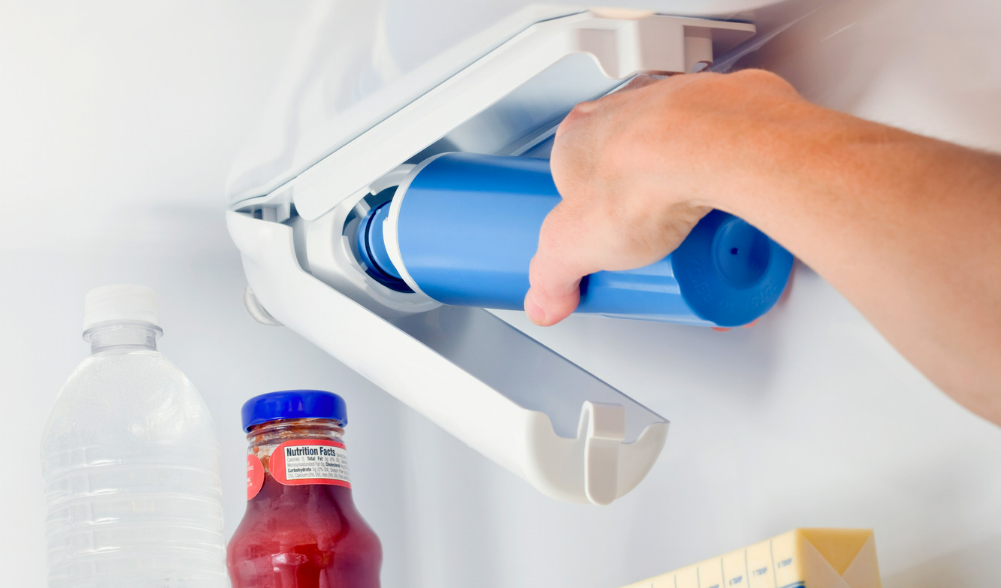Refrigerator water filters are essential for ensuring the quality and safety of your drinking water. They remove contaminants, such as chlorine, lead, and bacteria, that can affect the taste, odor, and health of your water. However, over time, these filters can get clogged and lose their effectiveness. That’s why it’s important to know how often to change your refrigerator water filter for optimal performance. In this article, we will explain the factors that influence the frequency of filter replacement and how to determine the best schedule for your refrigerator model.
Key Takeaways
- Regularly changing your refrigerator’s water filter is crucial for ensuring clean and refreshing drinking water.
- Signs such as altered water taste, reduced flow, and the filter’s age indicate when it’s time for a replacement.
- Follow manufacturer recommendations for filter replacement frequency, as it varies based on brand and usage, to maintain optimal water quality and appliance performance.
- Neglecting filter maintenance can lead to health risks and diminish the efficiency and lifespan of your refrigerator.
The Role of Refrigerator Water Filters
The modern refrigerator is more than just a cooling unit; it’s a hub for health and convenience. One of its standout features is the integrated water filter, but why have manufacturers made this a standard?
Why do refrigerators come with water filters?
- Safety and Health: Tap water, while generally safe, can contain impurities. Refrigerators with built-in filters provide an added layer of protection, ensuring that the water you drink is of the highest quality.
- Taste and Odor: A good water filter can significantly improve the taste and odor of water by removing chlorine and other chemicals commonly found in tap water.
The contaminants these filters typically remove
Chlorine is often used in water treatment but can affect taste and smell.
Heavy metals, such as lead and mercury, can be harmful in large amounts.
Particulates include dust and rust that might be present in older plumbing systems.
Microorganisms: Certain high-end filters can even remove bacteria and viruses.
Signs Your Filter Needs Changing
While manufacturers often provide guidelines on when to change your refrigerator’s water filter, there are tangible signs that can indicate it’s time for a replacement. Being vigilant about these signs ensures you always have access to high-quality water.
Changes in water taste or odor
One of the primary roles of a filter is to improve the taste and smell of water. If you start noticing a return of a chlorine taste or an odd odor, it’s a clear sign the filter is nearing its end.
Reduced water flow rate
A significant decrease in the water flow rate from the dispenser often indicates a clogged filter. Over time, as the filter traps more contaminants, it can become saturated, leading to reduced flow.
The age of the filter
Even if you don’t notice any immediate issues, it’s essential to consider the filter’s age. Most filters are designed to last for about six months, depending on usage and water quality.
Manufacturer Recommendations
When it comes to maintaining appliances, adhering to manufacturer guidelines is paramount. This is especially true for refrigerator water filters, where the quality of the water directly impacts our health.
Typical recommendations from leading refrigerator brands:
Most leading brands, such as Whirlpool, LG, and Samsung, suggest changing the water filter every 6 months. This timeframe ensures optimal performance and water quality. However, households with high water consumption might need more frequent replacements.
| Brand | Recommendation |
|---|---|
| Samsung | Keep the refrigerator between 37°F and 40°F. |
| Clean the condenser coils every 6 months. | |
| Avoid overloading the fridge to allow proper air circulation. | |
| LG | Set the refrigerator temperature to 37°F for the fridge and 0°F for the freezer. |
| Clean the gaskets and interior regularly to prevent odors. | |
| Change the water filter every 6 months. | |
| Whirlpool | Ensure the fridge temperature is set between 35°F and 38°F. |
| Clean the drip pan and condenser coils annually. | |
| Store food in airtight containers to maintain freshness. | |
| GE Appliances | Keep the fridge at 37°F and the freezer at 0°F. |
| Clean the door seals with warm, soapy water to maintain a good seal. | |
| Defrost the freezer when the ice buildup exceeds 1/4 inch. | |
| KitchenAid | Set the fridge temperature to 37°F and the freezer temperature to 0°F. |
| Clean the water and ice dispensers regularly to prevent clogs. | |
| Check and replace water filters every 6 months. |
The role of filter indicators in modern refrigerators:
Many contemporary refrigerators come equipped with filter indicators. These are designed to alert users when it’s time for a change. They typically track the volume of water that has passed through the filter or simply count down from a set period. When the indicator lights up or sounds an alarm, it’s a clear sign that the filter needs attention.
Factors Influencing Filter Life
The lifespan of a refrigerator water filter isn’t set in stone. Several factors can influence how long a filter remains effective, and understanding these can help homeowners make informed decisions:
Water quality in your area

If your local water supply contains a high level of contaminants or is particularly hard, the filter will have to work harder and might need more frequent replacements. Areas with cleaner water sources can expect longer filter lifespans.
Frequency of refrigerator use
Households that use their water and ice dispensers frequently will naturally cycle more water through the filter, leading to quicker saturation and a need for earlier replacement.
Filter type and brand
Not all filters are created equal. Some high-end filters are designed to last longer and handle more contaminants. Conversely, off-brand or generic filters might not offer the same longevity or effectiveness as their branded counterparts.
Risks of Not Changing Filters Regularly
While it might seem like a minor oversight, neglecting to change your refrigerator’s water filter can have significant consequences. The risks associated with prolonged filter use go beyond just taste and odor.
Potential health risks
Over time, a saturated filter can become a breeding ground for bacteria and might even release trapped contaminants back into the water. Drinking such water can expose individuals to harmful substances, potentially leading to health issues.
Impact on Refrigerator Performance
A clogged filter can reduce water flow, putting strain on the refrigerator’s dispensing system. This not only leads to inefficiencies but can also shorten the lifespan of the appliance. Additionally, mineral buildup from hard water can cause blockages and damage to the internal components.
Changing the Filter: A Step-by-Step Guide
Changing a refrigerator’s water filter might seem daunting, but with the right guidance, it’s a straightforward process. Here’s a simple guide to help you through the process:
Locating the filter
Most modern refrigerators have their water filters located either at the base, front, or inside the fresh food compartment. Check your user manual or look for a label or sticker on the appliance that indicates the filter’s location.
Removing the old filter
- Turn off the water supply to the refrigerator.
- Depending on the model, you might need to twist, pull, or push a button to release the filter. Gently remove the old filter, ensuring no water spills.
Installing the new filter
- Remove any packaging or protective caps from the new filter.
- Align the filter with the slot and push or twist it into place, ensuring a snug fit.
- Turn the water supply back on and run a few gallons through the dispenser to flush out any residue.
Frequently Asked Questions
As homeowners delve into the world of refrigerator water filters, several questions often arise. Here are answers to some of the most frequently asked questions:
How does water quality affect filter lifespan?
Water quality plays a pivotal role in determining how long a filter will last. If the water in your area has a high concentration of contaminants or is particularly hard, the filter will saturate faster. Conversely, cleaner water sources mean the filter can last closer to its maximum lifespan.
Can I clean and reuse my filter?
While it might be tempting to clean and reuse a filter to save money, it’s not recommended. Over time, the filter’s ability to trap contaminants diminishes, and cleaning won’t restore its original efficacy. It’s best to replace the filter as per the manufacturer’s guidelines to ensure optimal water quality.
What if my refrigerator doesn’t have a filter change indicator?
If your refrigerator lacks a filter change indicator, it’s wise to mark your calendar or set a reminder. Most filters need changing every 6 months, but always refer to the manufacturer’s recommendations.
Final Thought
In the realm of household appliances, the refrigerator stands as a cornerstone, especially when it provides clean, purified water. The significance of regular filter changes cannot be overstated, both for ensuring optimal health and maximizing appliance longevity. By neglecting this simple maintenance task, homeowners risk compromising water quality and the efficient functioning of their refrigerators. Beyond just following guidelines, it’s crucial to adopt a proactive approach to appliance maintenance. By staying informed and vigilant, one can ensure that every glass of water from the refrigerator is as pure and refreshing as nature intended.

Mark is a seasoned Outdoor Equipment and Heating Appliances specialist. With a passion for adventure and a keen understanding of heating solutions, he brings expertise to the world of outdoor enthusiasts. Mark’s insights, gained through years of experience, make him a go-to resource for those seeking reliable guidance in navigating the realm of outdoor gear and heating technologies.

